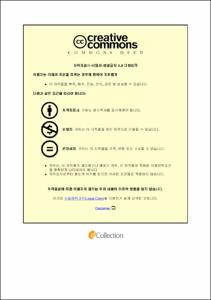용융염법을 이용한 다이아몬드 입자 표면의 금속 탄화물 코팅에 관한 연구
- Alternative Title
- Metal Carbide Coating of Diamond Particles using Molten Salt Method
- Abstract
- Diamond has high hardness and thermal conductivity, and the diamond compacts are used as grinding wheels, cutting tools, and heat sinks of electronic devices. For diamond/metal composite fabrication, coating diamond particles with metal carbide provides improved wettability between the diamond particles and the matrix. In this study, diamond particles were coated with chromium (Cr) and titanium (Ti) using a molten salt method. Diamond and metal powders were heated at 600–950℃ in molten salts of lithium chloride (LiCl), potassium chloride (KCl), and sodium chloride (NaCl) to create a chromium carbide (here Cr7C3) or titanium carbide (TiC) coating on the diamond particles. Carbide formation was influenced by the diffusion rate and eutectic point of the molten salt mixture. The resulting Cr7C3 or TiC coating surface and microstructure were characterized by X-ray diffraction and scanning electron microscopy, respectively. Coating layer thickness was determined using particle size analysis and confirmed by energy dispersive spectroscopy results. A uniform Cr7C3 or TiC layer formed on the surface of the diamond particles at a relatively low temperature, at which the graphitization of diamond is avoided. In addition to the eutectic point, diamond particles can be coated with a chromium carbide layer with a similar coating thickness and shape using a LiCl-KCl-NaCl molten salt in various compositions. Compared with a mixture of LiCl, KCl, and calcium chloride (CaCl2), which had been used in our previous study, the LiCl-KCl-NaCl mixture increased the reaction rate and initiated coating at a much lower temperature. The coating of Cr on the diamond surface was much thicker than the titanium coating on the diamond surface, regardless of temperature. This indicates that the Cr coating on the diamond surface is much faster in coating reaction or diffusion rate than the Ti coating on the diamond surface. The differences between the two molten salt mixtures for coating diamond are discussed in terms of the diffusion parameters.
- Issued Date
- 2020
- Awarded Date
- 2020. 2
- Type
- Dissertation
- Keyword
- Diamond Coating Moltensalt
- Publisher
- 부경대학교
- Alternative Author(s)
- Hwa Jung Kim
- Affiliation
- 부경대학교 대학원
- Department
- 대학원 LED공학협동과정
- Advisor
- 최희락
- Table Of Contents
- Ⅰ. 서론 1
Ⅱ. 이론적 배경 7
1. 다이아몬드 7
가. 다이아몬드 7
나. 다이아몬드의 흑연화 10
2. 다이아몬드 입자의 표면 코팅 12
가. 용융염법 12
나. 금속기지 복합재료에서 다이아몬드 코팅의 영향 13
(1) 크롬 코팅 17
(2) 티타늄 코팅 18
(3) 몰리브덴, 텅스텐 코팅 및 그 외의 원소 18
Ⅲ. 실험방법 25
1. 다이아몬드 코팅의 재료 25
2. 용융염을 이용한 다이아몬드 코팅 방법 27
3. 다이아몬드 코팅 분석 방법 33
Ⅳ. 용융염 성분에 따른 다이아몬드 입자의 크롬 코팅 34
1. LiCl-KCl-NaCl용융염을 이용한 다이아몬드 입자 코팅 35
가. 용융염을 이용한 크롬 코팅의 메커니즘 35
나. 코팅층 관찰 및 분석 37
다. 코팅 두께 측정 및 분석 45
라. 절단면 관찰 및 분석 51
마. 다양한 성분비의 혼합염을 이용한 코팅 54
2. 공정 LiCl-KCl-CaCl2 용융염을 이용한 다이아몬드 입자 코팅 59
가. 코팅층 관찰 및 분석 59
나. 코팅층 두께 측정 65
3. 공정 KCl-CaCl2 용융염을 이용한 다이아몬드 입자 코팅 68
가. 코팅층 관찰 및 분석 68
나. 코팅층 두께 측정 75
4. 다양한 용융염을 이용한 다이아몬드 코팅 비교 78
가. 용융염 성분이 다이아몬드 코팅온도 및 미세조직에 미치는 영향 78
나. 용융염 성분이 코팅 두께에 미치는 영향 85
Ⅴ. LiCl-KCl-NaCl 용융염을 이용한 다이아몬드 입자 코팅 87
1. 다이아몬드 입자의 티타늄 코팅 88
가. 용융염을 이용한 티타늄 코팅의 메커니즘 88
나. 코팅층 관찰 및 분석 89
다. 코팅 두께 측정 97
2. 코팅 원소에 따른 다이아몬드 입자 코팅 특성 비교 101
가. 다이아몬드 입자의 몰리브덴 및 텅스텐 코팅 101
나. 다이아몬드 코팅 온도가 크롬, 티타늄 및 몰리브덴의 코팅과정에 미치는 영향 106
다. 코팅온도에 따른 크롬과 티타늄 코팅층의 두께 변화 108
라. 용융염에서의 크롬, 티타늄 원소의 용해도에 미치는 영향 110
Ⅵ. 결론 111
Ⅶ. 참고문헌 113
- Degree
- Doctor
- Files in This Item:
-
-
Download
 용융염법을 이용한 다이아몬드 입자 표면의 금속 탄화물 코팅에 관한 연구.pdf
기타 데이터 / 10.9 MB / Adobe PDF
용융염법을 이용한 다이아몬드 입자 표면의 금속 탄화물 코팅에 관한 연구.pdf
기타 데이터 / 10.9 MB / Adobe PDF
-
Items in Repository are protected by copyright, with all rights reserved, unless otherwise indicated.